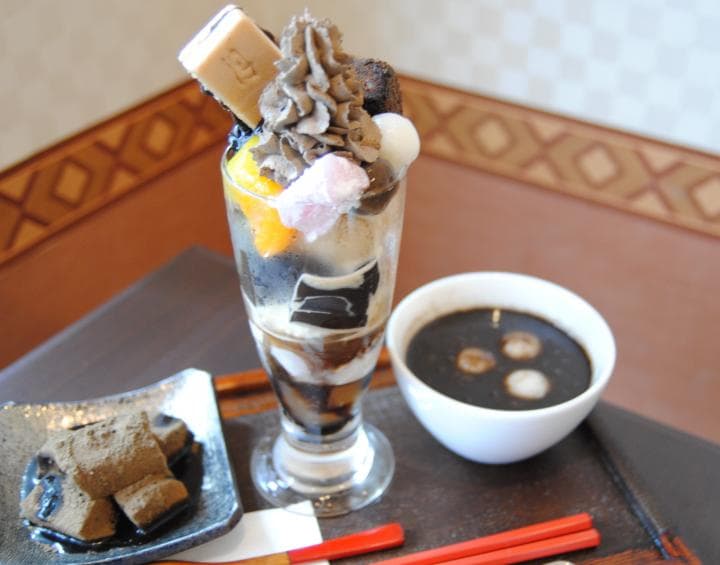Sweet Showdown: Wagashi vs. American Desserts

The culinary world is full of sweet treats, and some of them have become cultural icons. Japanese wagashi and American desserts represent two distinct approaches to sweetness — one of refinement, the other of abundance. These sweets are not just dishes but reflect philosophies, taste habits, and even spirituality. As global interest in gastronomy grows, including in the Czech Republic, comparing these two sweet cultures becomes ever more fascinating. Let’s explore the worlds behind each bite from the East and the West.
Tradition of Taste and Beauty: The Beginning of a Sweet Dialogue
In today’s world, where gastronomy is seen not merely as a means of satisfying hunger but as a form of art, sweets lie at the very heart of this appreciation. Wagashi and American desserts are more than just treats — they are expressions of culture, tradition, and even worldview. Each carries its own philosophy, aesthetics, and flavor message. In Europe, and particularly in the Czech Republic, there is a growing interest in national culinary cultures, with Czech gourmets increasingly open to trying exotic and rare flavors. Whether it’s enjoying wagashi with matcha tea or eating cheesecake while watching a drama, many find it hard to choose.
Modern entertainment trends, ranging from online casino experiences to digital exhibitions and cooking classes, allow people to explore diverse worlds from the comfort of their homes. Within this context, vibrant gastronomic comparisons like wagashi versus American desserts take on new meaning.
Wagashi — The Philosophy Within Sweetness
Wagashi are not just desserts — they are part of Japanese tea ceremony and cultural heritage. These confections are handcrafted and emphasize the shapes and beauty of the four seasons and nature. Common ingredients include anko (sweet red bean paste), rice flour, agar, and chestnuts. The flavors are subtle and often include a touch of bitterness or saltiness, creating complex and refined profiles.
Even their shapes carry symbolic meaning, representing flowers, leaves, raindrops, and phases of the moon. Wagashi are not merely eaten; they are appreciated like works of art. These sweets call for a slow pace, quiet moments, and a meditative mindset — they embody the very essence of the Japanese aesthetic known as wabi-sabi.
American Desserts — A Festival of Flavor and Abundance
American desserts are, above all, emotional explosions. Like the burger in the savory world, they are bold, rich, and filled with sweetness to the very last bite. From thickly frosted carrot cakes to extravagantly topped cupcakes, everyone can find a favorite. Famous examples include brownies, cheesecake, apple pie, and chocolate chip cookies.
These desserts reflect a culture of consumption, convenience, and experimentation. Often made with sugar, butter, cream, and chocolate, American desserts are a way to indulge without ceremony. In contrast to the ritual of wagashi, American sweets are part of everyday life — whether at a party or during a break at work.
A Taste Showdown: Contrasting Views on Sweetness
The major difference between wagashi and American desserts lies in their perception of sweetness and their role in the meal. Japanese people see sweetness as a nuance or accent — something delicate and restrained. In America, sweetness is often the goal itself and is enjoyed in bold, intense expressions. Thus, where wagashi gently surprises the palate, an American brownie overwhelms the mouth with chocolate and sugar.
Contemporary Preferences and Culinary Trends
Interest in wagashi as a gastronomic phenomenon is growing in Central European countries, including the Czech Republic. Cities like Prague, Brno, and Olomouc have begun to see cafés and shops offering mochi, dorayaki, and yokan. The fact that many wagashi are often vegan or gluten-free has drawn attention amid rising health consciousness.
Still, American desserts remain ever popular. Their visual appeal, intense flavor, and convenience make them staples in both cafés and home kitchens. Moreover, they are often tied to childhood memories, nostalgia, and family traditions. While wagashi require observation and a refined palate, American desserts offer warmth, comfort, and emotion.
East and West at the Same Table: Is Fusion Possible?
The opposition between wagashi and American desserts is less a battle of flavors and more a dialogue of cultures. Each has its own value, tradition, and philosophy. Lately, it’s not unusual to see bento boxes with mochi sitting next to vibrant cupcakes in store displays. People are looking for new experiences but also find comfort in familiar tastes. The future of gastronomy may lie in such blends — like a cheesecake made with anko paste or…
